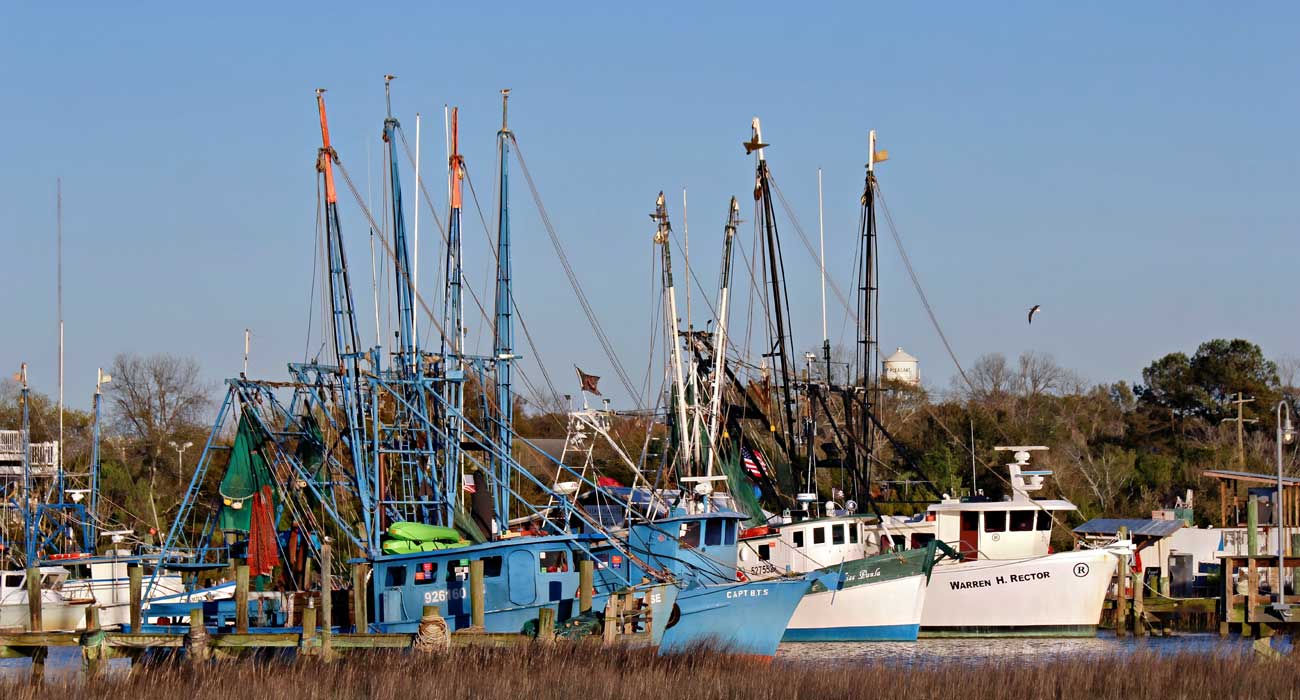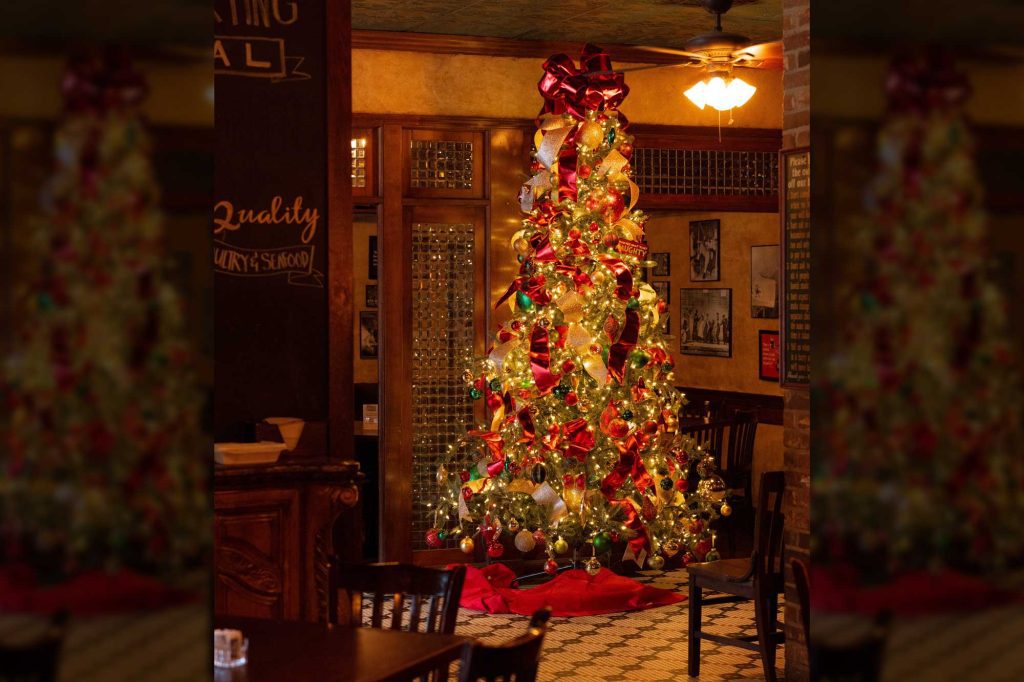On an upcoming episode of our new television series, Palate to Palette with Robert St. John and Wyatt Waters, the artist and I learn how to catch shrimp with a third-generation shrimp boat captain on his rig. To find out how we did, you’ll have to tune in to Mississippi Public Broadcasting on an upcoming Thursday night at 7:00pm, but I will let you know that it wasn’t much different than Forrest Gump’s early attempts on his boat the Jenny.
Wild American Shrimp are one of this country’s greatest natural culinary resources. The warm waters of the Gulf of Mexico provide one of the greatest bounties of shrimp in the world. To be a restaurateur and to live only an hour away is truly a blessing.
Biloxi was once called the “Seafood Capital of the World.” In the 1880s, immigrants from Croatia and Bosnia (“Croats”), settled along the Mississippi Coast and started fishing commercially. I still buy a lot of seafood from one of their descendants, Todd Rosetti.
Commercial fishermen and seafood retailers are almost always family-run operations. Our captain on the television episode was Ronald Baker. We ventured out on his boat, the Doris Mae. He grew up in a house on Deer Island. His father was a shrimper, and his grandfather was a shrimper. As a kid, he took a boat to the mainland to get to school every day. Baker started working on various family boats at an early age.
Todd Rosetti is a third-generation seafood retailer. His family has been selling fresh shrimp, Gulf fish, and crabmeat since his grandfather, Bruno Rosetti, set up shop in Biloxi decades ago. Todd has forgotten more about seafood than I’ll ever know.
At the Crescent City Grill we purchase over 32,000 pounds of Wild American Shrimp from the Gulf of Mexico every year. We know shrimp. I love the fact that we are a family-run business being supplied by local families. It’s really at the heart of what we do. We believe in doing business locally, and have been buying “local” since 1987.
This year the shrimp haul is down. We had too much rain early on and the water stayed warm to mid-July. There were a lot of small shrimp early, but the mid-size shrimp were scarce. White shrimp are being harvested this time of year, and that haul is also down from last year. Having a steady supply of shrimp on our plates are one of the things that we can sometimes take for granted. I never underestimate the importance of family shrimpers, fishermen, and seafood suppliers. Seafood seasons are always up and down. It’s been a down year for the family shrimpers, let’s hope next year is a record year.
It is important to know— and have a close, trusting relationship— with your seafood supplier. He or she knows the fishermen, shrimpers, and oystermen. It’s also important to know from where your seafood comes. We ONLY use Wild American Shrimp, and we take that a step further and ONLY serve Wild American Shrimp from Gulf waters.
More than 90% of shrimp served in restaurants throughout the country are farm-raised and imported shrimp. The other 10% are wild caught and come from waters that are within a few miles of the Mississippi Coast. We use Wild American Shrimp because it’s the “right” thing to do, but also because they taste better due to the nutrient-rich Gulf waters from which they come.
Wild American Shrimp are healthier, too. They are always antibiotic free. The FDA only tests about 1% of farm-raised and imported shrimp. Wild American Shrimp are a true, sustainable crop, and the shrimp from the warm waters of the Gulf of Mexico just taste better. Always make sure that the restaurant where you eat shrimp— or the market where you purchase shrimp— uses only Wild American Shrimp .
Know, too, that Mississippi Gulf shrimp are safe with Waters and St. John at the helm of a shrimp boat.



